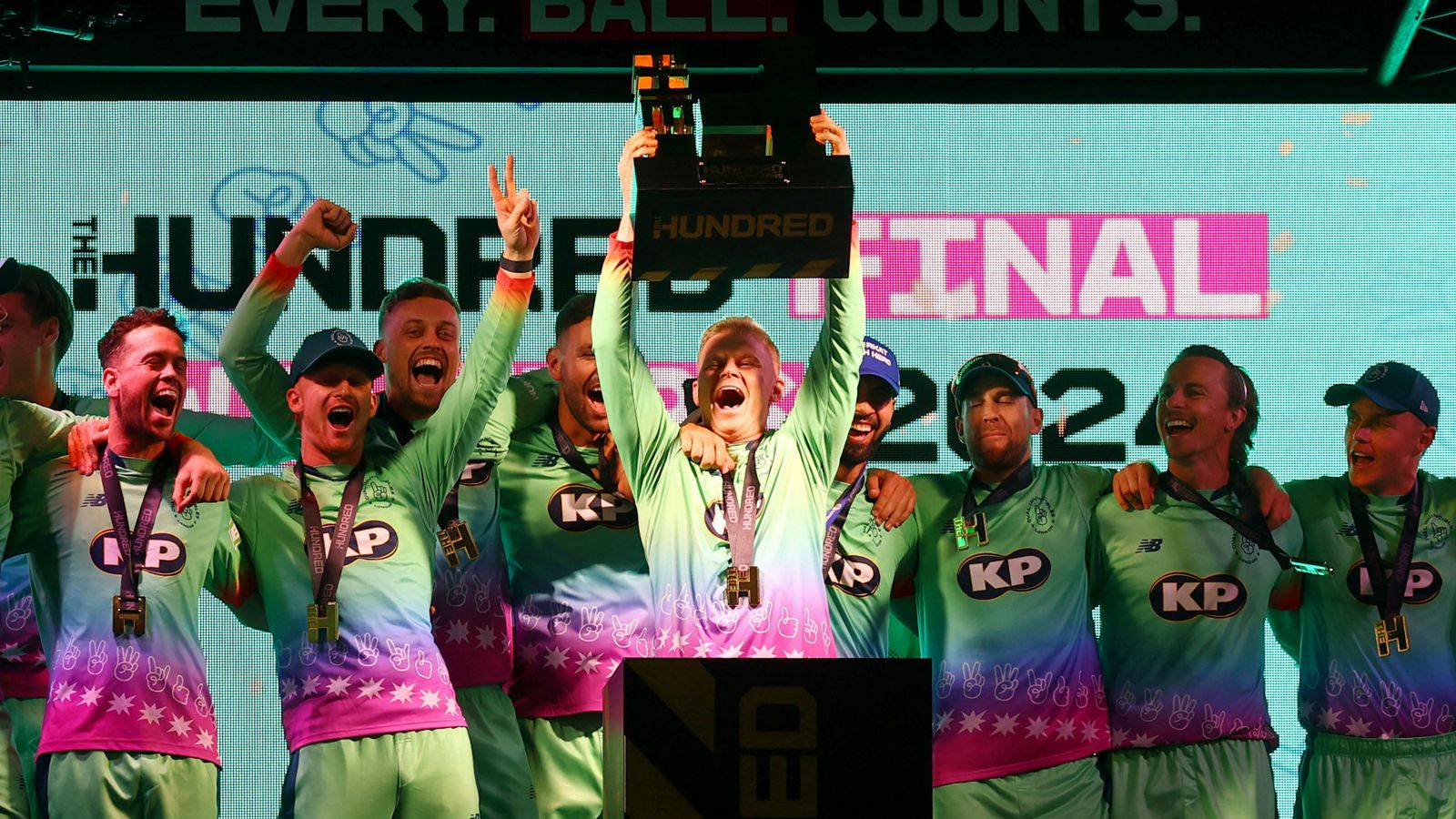U.K News
The Hundred: Cricket takes the fight to football with near £1bn auction

A New Era for Cricket: How The Hundred is Revolutionizing the Sport in England
History Repeats Itself: The Stanford Debacle and the Rise of The Hundred
In the summer of 2008, cricket fans were left stunned when American tycoon Allen Stanford landed at Lord’s Cricket Ground in a helicopter, promising a lucrative future for the sport through a series of high-profile Twenty20 competitions. Stanford’s arrival was met with excitement, but the bubble burst when his empire was exposed as a Ponzi scheme, and he was jailed for fraud. This chapter in cricket’s history serves as a cautionary tale, but it also highlights the sport’s enduring appeal and its ability to adapt and evolve. Fast forward to 2023, and cricket in England is once again at a crossroads, this time with the introduction of The Hundred, a shorter, faster format designed to attract new audiences and breathe fresh life into the game.
The Hundred, launched in 2021, is a bold experiment by the England and Wales Cricket Board (ECB). Each team bats for just 100 balls, making it an even shorter format than Twenty20. Despite being played for only one month a year, the competition has already generated significant buzz and investment. In a recent auction, the eight teams were valued at an impressive £975 million, signaling anew era of prosperity for English cricket. However, unlike traditional county cricket, which has been the lifeblood of the sport since 1890, The Hundred operates under a franchise model, with teams attracting high-profile investors from the worlds of tech and sports.
The Shift to Franchise Cricket: A New Era for the Sport
The rise of franchise cricket is a global phenomenon, with leagues like the Indian Premier League (IPL) setting the standard for success. The Hundred is England’s attempt to join this revolution, and it has already drawn in some big names. Investors like Chelsea’s co-owner Todd Boehly and NFL legend Tom Brady have acquired stakes in teams like the Trent Rockets and Birmingham Phoenix. Four of the investors also own IPL teams, including India’s wealthiest family, the Ambanis, who purchased a 49% stake in the Oval Invincibles for £60 million. Even Silicon Valley is getting in on the action, with tech billionaires like Google and Microsoft CEOs investing £145 million for a nearly 50% stake in the London Spirit.
This influx of capital is not just about profit; it’s about building a global cricket network. The Hundred’s owners are part of a growing trend where franchise cricket transcends borders, with the best players potentially shuttling between leagues worldwide. While this may excite fans and investors, it has also sparked concerns among traditionalists who fear that the shorter formats could overshadow the longer, more historic forms of the game, such as Test cricket.
Grassroots cricket: The Backbone of the Sport
While The Hundred and its high-profile investors grab the headlines, the ECB has not forgotten the grassroots that have sustained the sport for generations. From village greens to local clubs, cricket has long been a community-driven sport. The ECB has pledged £50 million from the proceeds of the auction to support grassroots cricket, ensuring that the benefits of this financial windfall trickle down to the youngest players and smallest clubs.
However, questions remain about whether The Hundred’s short season and reliance on franchise cricket can justify the hype. With teams playing for just one month a year, some wonder if the format will have a lasting impact or if it risks overshadowing the very foundations that have made cricket a beloved sport for over a century.
Aiming for the Next Generation: Cricket’s Push to Be More Accessible
At the heart of The Hundred’s strategy is a desire to make cricket more accessible and appealing to a younger, more diverse audience. ECB chief executive Richard Gould has been clear about the organization’s ambitions, stating that cricket is ready to “muscle in on football” and increase its share of both broadcast revenue and spectator numbers. The shorter format, flashy presentation, and high-energy matches are all designed to attract fans who might otherwise be drawn to football or other sports.
The Hundred is not just about the cricket itself; it’s about creating a vibrant, family-friendly experience. From the music and entertainment during matches to the interactive fan engagement, the competition is designed to feel more like a modern entertainment event than a traditional sports match. This approach has already shown signs of success, with The Hundred attracting new fans, particularly women and children, who have historically been underrepresented in cricket’s supporter base.
The Future of Cricket: Balancing Tradition and Innovation
As The Hundred continues to gain momentum, the ECB is walking a fine line between embracing innovation and preserving the traditions that have made cricket the “Home of Cricket.” While some fans and purists worry about the potential erosion of longer formats, the ECB believes that The Hundred can coexist with Test and county cricket, creating a sustainable future for the sport.
Investors like Nikesh Arora, CEO of Palo Alto Networks, are optimistic that The Hundred can replicate the success of the IPL by tapping into the emotional connection that cricket fans have with the game. With its iconic venues, rich history, and passionate fanbase, England is uniquely positioned to create a franchise competition that resonates globally.
The journey ahead will not be without challenges. The ECB must ensure that The Hundred delivers on its promise of growth and sustainability while also safeguarding the integrity and legacy of the sport. For now, though, the £975 million windfall from the auction is a clear sign that cricket in England is on the cusp of a new and exciting era—one that could redefine the sport for generations to come.